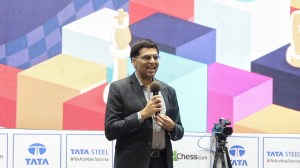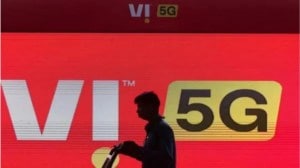Maruti to launch 3 new models
NEW DELHI, AUG 3: The board of directors of Maruti Udyog Ltd (MUL) has finalised the launch schedule for its three new models - Baleno, W...

NEW DELHI, AUG 3: The board of directors of Maruti Udyog Ltd (MUL) has finalised the launch schedule for its three new models – Baleno, Wagon-R and Alto – with the first model rolling out in November this year.
The board, which met in Hungary yesterday, has decided that Baleno, powered by a 1600 cc engine, would be the first of the three new models to hit the streets. The car, which is presently undergoing road-testing here, would be introduced in the Indian market in November, sources close to the company said.
The Wagon-R, with a 1000 cc engine, would be the second in line to zip down the city streets, by February 2000. And, an upgrade of the existing Zen – Alto’ – would be the final among the new models. The car is scheduled to be launched in April with two engine variants – 800cc and 1000cc.
Besides, the board also reviewed the progress on the preparations of the new multi-point fuel injection engines and decided to advance the launch of the new engines to January 2000, the sources said. “Vendors have already been given the tight schedule and work is on in full swing,” vendor sources added.
Baleno, the sources said, would be positioned in the semi-luxury segment to stave off the fierce competition from a stew of new models scheduled to be launched around November. Ford has lined up its new model Ikon and Hyundai its LC’ for launch in the same segment around November this year.
The Wagon-R is a multi-purpose vehicle and a hybrid between a van and a car. The sources further pointed out that efforts have already been initiated to localise the power trains for the new models. “Only the Baleno engine would be imported initially, the engines for the other models would be produced at Maruti’s Gurgaon factory from day one. But Baleno engines would also be localised soon.”
The Wagon-R would, in fact, be rolled out with a 70 per cent local content level. The board also finalised the accounts for the 1998-99 fiscal. The company had earned a profit after tax of Rs 522 crore for 1998-99 (provisional), showing a drop of around 20 per cent over Rs 652 crore in the previous year. The profit before tax was down by 19.85 per cent to Rs 783 crore from Rs 977 crore. The total income had also declined to Rs 8,118 crore from Rs 8,474 crore, losing ground by 4.20 per cent.
However, the company is now poised for growth as is reflected in the sales figures for the first four months of the current fiscal. The bottomlines are also likely to improve and MUL has projected to close the current fiscal with a 20 per cent growth in turnover. The passenger car major has projected its sales in the year to cross the 400,000 mark this year, up 30 per cent from 309,094 units in 1998-99.
Maruti had registered a highest-ever monthly sales since its inception 15 years ago at 35,528 units in July, 1999 as against a previous high of 32,193 units in may this year. It also chalked up all time high sales of Zen and Omni during the month. Overall, Maruti registered a growth of 16 per cent over 30603 units sold in the corresponding month last year. The company attributed the surge to the cut in prices of its passenger car models effected in January this year.
The board of directors of MUL has also decided not to resume sales of its Gypsy’ multi-utility vehicle in the National Capital Region this fiscal in view of the low sales figure for the vehicle and tremendous cost involved in making it Euro-I compliant. However, efforts are on to introduce the new Omni’ van, conforming to Euro-I emission norms, by October this year.
Registration and sale of both Gypsy and Omni have been restricted in the NCR since June one following a blanket ban by the Supreme Court on sale of vehicles not conforming to Euro-I norms.
The company is giving priority to the Omni van, since it is the firm’s second-largest selling model. “The sales for Gyspy are not all that high to push us into rushing with a Euro-I variant. We would directly go in for a Euro-II compliant Gypsy in April next year.”
In the 1998-99 fiscal, Maruti had sold about 58,000 Omnis and 6,500 Gypsys in the country. All the vehicles from Maruti stables would be made Euro-II compliant beginning next fiscal. Mul is a 50:50 joint venture between the Government of India and Suzuki Motor Corporation of Japan.



- 01
- 02
- 03
- 04
- 05




























